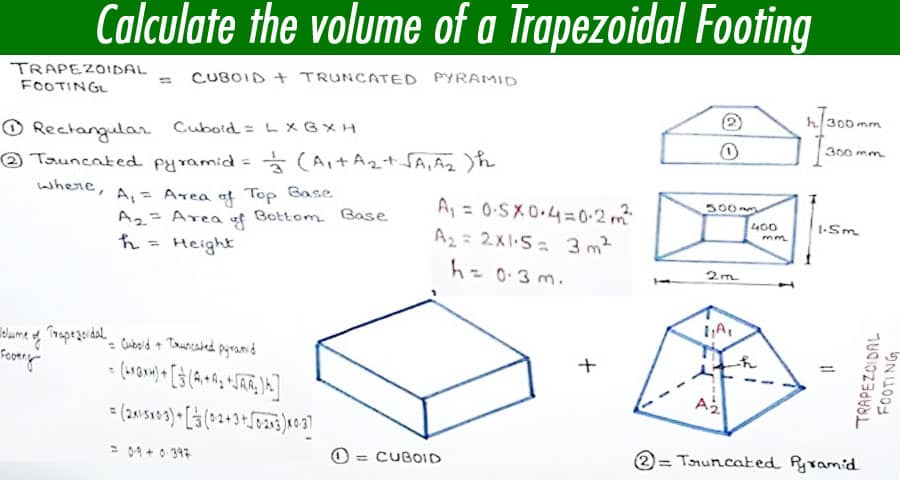Calculate the volume of a Trapezoidal Footing

In the realm of construction and civil engineering, understanding how to calculate the volume of various structures is essential. One such structure that often requires volume calculation is the trapezoidal footing.
Introduction
Before we dive into the nitty-gritty of calculating the volume of a trapezoidal footing, let's establish the importance of this skill in construction and engineering projects. Trapezoidal footings are commonly used to support heavy structures like buildings and bridges, making it crucial to know how to determine their volume accurately.
Understanding Trapezoidal Footings
A trapezoidal footing, as the name suggests, has a trapezoidal shape when viewed from the top. This shape provides stability and load-bearing capacity. To calculate its volume, you'll need to consider the dimensions and shape of the footing.
Required Tools and Materials
To get started with calculating the volume of a trapezoidal footing, gather the following tools and materials:
- Measuring tape or ruler
- Calculator
- Pen and paper
- Knowledge of the trapezoidal footing's dimensions
Step-by-Step Calculation
Finding the Area of the Base
The first step in calculating the volume of a trapezoidal footing is to find the area of its base. Use the following formula:
Base Area (A) = (a + b) * h / 2
Where:
- a = Length of the longer parallel side of the trapezoid
- b = Length of the shorter parallel side of the trapezoid
- h = Height of the trapezoid (distance between a and b)
Determining the Length of the Trapezoidal Sides
Measure the length of the two slant sides of the trapezoidal footing, also known as the inclined sides (s1 and s2).
Calculating the Volume
Now that you have the area of the base and the lengths of the inclined sides, you can calculate the volume using the formula:
Volume (V) = A * (s1 + s2) / 2
This formula takes into account the area of the base and the average length of the inclined sides.
Real-World Application
Let's put this knowledge into practice with a real-world example. Imagine you're designing the foundation for a small storage shed. You need to calculate the volume of the trapezoidal footing to determine the amount of concrete required.
Common Mistakes to Avoid
In the process of calculating the volume of a trapezoidal footing, there are some common mistakes to watch out for. These can include errors in measuring dimensions or miscalculations in the formulas.
Safety Precautions
When working on construction projects, safety should always be a top priority. Ensure that you follow safety guidelines and wear appropriate protective gear.
Conclusion
Calculating the volume of a trapezoidal footing is a fundamental skill in construction and engineering. By understanding the steps involved and using the appropriate formulas, you can ensure that your projects are built on a solid foundation.
FAQs
Can I use software to calculate the volume of a trapezoidal footing?
Yes, there are several software applications available that can simplify the calculation process. However, it's essential to understand the manual calculation method for a better grasp of the concept.
What if the trapezoidal footing is not symmetrical?
If the trapezoidal footing is not symmetrical, you'll need to adapt the calculations accordingly. Treat it as two separate trapezoidal shapes and calculate their volumes individually.
Are there any online tools for calculating trapezoidal footing volume?
Yes, you can find various online calculators and tools that can help you determine the volume of a trapezoidal footing. Make sure to input the correct dimensions for accurate results.
Can I use the volume calculation for other shapes of footings?
The volume calculation discussed here is specific to trapezoidal footings. Different shapes, such as rectangular or circular footings, have their own volume calculation methods.
What's the importance of accurate volume calculation in construction?
Accurate volume calculation ensures that you order the right amount of materials, such as concrete, saving you time and money in construction projects.
